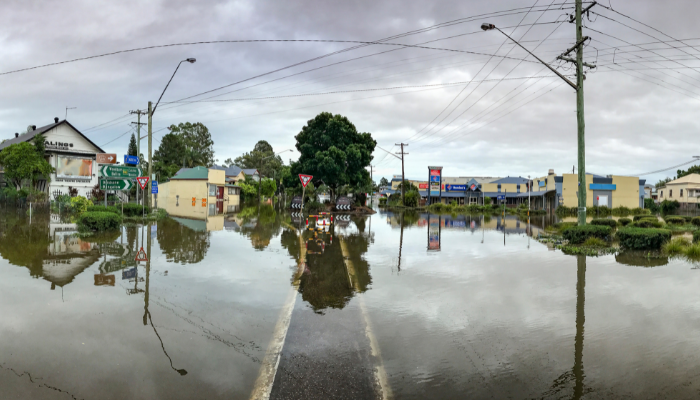
Food safety advice has been offered following several floods in eastern Australia in the past few weeks.
Flooding and heavy rain in Queensland and New South Wales have caused power outages, properties to be inundated and roads to be blocked. A total of 22 people have died, according to recent media reports.
The Food Safety Information Council (FSIC) warned people not to take food safety risks during and after a flood.
Lydia Buchtmann, FSIC communication director, said floodwater can contain sewage, agricultural and industrial waste plus other substances that may cause illness so there is a risk that any food, surfaces and cooking utensils it comes into contact with might be contaminated.
FSIC advised people to throw out food touched by floodwater or that has an unusual odor, color or texture and not to taste or cook it.
Other guidance includes to check canned and unopened bottled food and discard any cans that are dented, swollen or damaged. Check dishes, pans, cutlery and kitchen equipment and throw away damaged or cracked items and those made from porous material such as wood, plastic or rubber including wooden chopping boards.
Wash utensils and surfaces in hot, soapy, drinking-quality water. Sanitise silverware, metal utensils, pots, pans and kitchen equipment and air dry items because towels might have been splashed with contaminated water.
Buchtmann said after a flood, tap water and private supplies from tanks, wells and bores might not be safe to drink or use for cooking and cleaning.
“If the water is unsafe, use only bottled, boiled or treated water — in that order of preference — for drinking, cooking or preparing food, washing utensils and surfaces, brushing teeth, handwashing, making ice, and bathing,” she said.
The Fresh Produce Safety Centre has put together a list of resources for industry on the topic.
Andreas Klieber, FPSC chair, said: “It’s important that those along the supply chain including growers, packers and processors, understand the risks associated with potential contamination with floodwater and what to do about it.”
Testing usually focuses on E. coli as a general indicator of fecal contamination. The presence of more than 10 colony forming units (CFU) of E. coli in 1-gram of the produce indicates there may be an issue that merits further investigation.
Produce that has been in contact with floodwater should not be harvested unless it meets limits of E. coli below 10 CFU/g and Salmonella not detected in a 25-gram sample or other customer specifications. If it meets these limits, then a pathogen reduction treatment like washing with sanitizer should be applied postharvest.
E. coli under 1 CFU/100 ml is the potable water limit for final wash or single-step wash and other applications if the food will or may be eaten uncooked. E. coli below 100 CFU/100ml is the limit for final or single-step wash and other post-harvest applications if produce is always eaten cooked.
Article by CFT
We have a dedicated team giving online students personal support through their training. CFT International is committed to improving training delivery options for all people in the food industry from cooks in aged-care and childcare, to hospitality workers, people in food manufacturing and retail industries. This commitment to quality in turn supports food industry workers to deliver safe high-quality food to their customers.
For more information visit - https://cft.com.au/
_1.png)